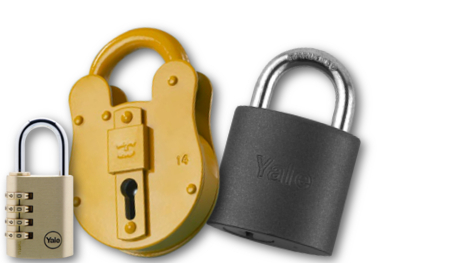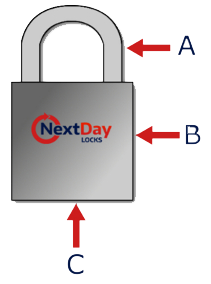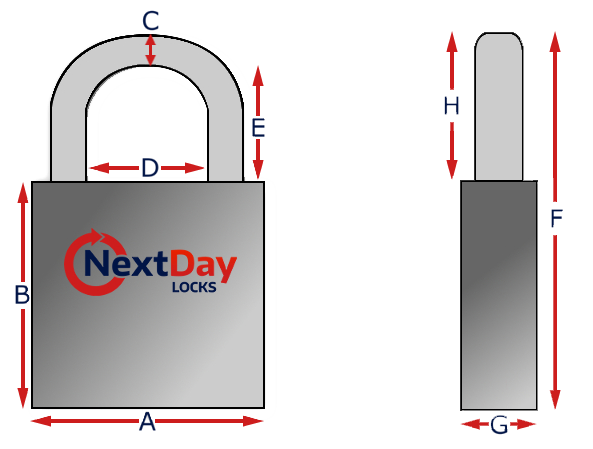How To Guide - Padlocks
Get to grips with all things Padlock
Not sure if you need closed, open, concealed or sliding shackle; maybe you just want to make sure you get the right size padlock for your application.
What ever your padlock predicament is, we're sure to have an answer in one of our handy Padlock Guides. With helpful diagrams, you'll know your marine grade from your TSA approved padlock in no time!
Can't find an answer to your padlock problem? Why not get in touch. We'd be more than happy to answer any questions you might have.
The Range
Click Here to view the different options of padlocks we have available for same day despatch.
Padlock Terminology
|
 |
How To Measure Padlocks
|
 |
Padlock Maintenance
Padlocks today are designed to be very low maintenance however over time a build up of dust and dirt can start to have a detrimental effect on the internal locking mechanisms.
Often the best solution is a blast of compressed air, this can come from a compressor or alternatively a spray can, these can be found in most computer orientated stores. You should not used a standard liquid based lubricant such as WD40, the wet oil mixes with the dust and clogs the mechanism up, if lubricant is required than a specialist dry graphite based products should be used.
Padlock Selection
Choosing the right padlock for the application you have is of paramount importance, there are many factors to consider however below are the main points.
1) Environment
- The first thing you need to do when choosing a padlock is to consider the wider environment it will be used in, if you buy the wrong product you will soon have product failure.
- Is it indoor or outdoor? If it is outdoor often stainless steel or weatherproof padlock would be more suitable
- Is it for use near the coast? Persistent exposure to salt water can be corrosive and a marine specification padlock would probably be the best choice.
- Is it a very dirty environment? If it is then perhaps a padlock with a dust cover would help to extend the life of the padlock and ensure continued functionality?
2) Fit For Purpose
- Sometimes you may have limitations as to what padlock you can choose.
- Is there enough room for the padlock to hang?
- Is the hole in the hasp big enough to take the shackle diameter?
- Once in place can the key hole be accessed?
3) Security Level
- When looking for a padlock you need to consider how well it needs to stand up to types of attack.
- If you have the best padlock money can buy there will be virtually no security benefit if it is fitted on the lightest duty hasp & staple you can find; the security is only as good as its weakest component and so the whole solution needs to be considered.
- On more secure applications ensure that you have locking points that are fixed from the inside only, i.e. concealed fixings.
- The main point of attack is usually the padlock shackle; the resistance to attack can be greatly increased by selecting a concealed shackle padlock, a sliding shackle padlock or a larger heady duty padlock.
